The alpha300 Semiconductor Edition is a sophisticated confocal Raman microscope designed for the chemical analysis of semiconducting materials. This advanced tool helps researchers quickly analyze crystal quality, strain, and doping levels in semiconductor samples and wafers.
The microscope features an extended-range scanning stage that allows for the examination of wafers up to 300 mm (12 inches) in diameter, facilitating the capture of large-area Raman images.
It features active vibration damping and active focus stabilization to ensure precision in measurements conducted over sizable regions or extended acquisition periods, effectively compensating for topographic variations.
All microscope components are fully automated, enabling remote-control and the implementation of standard measurement procedures.
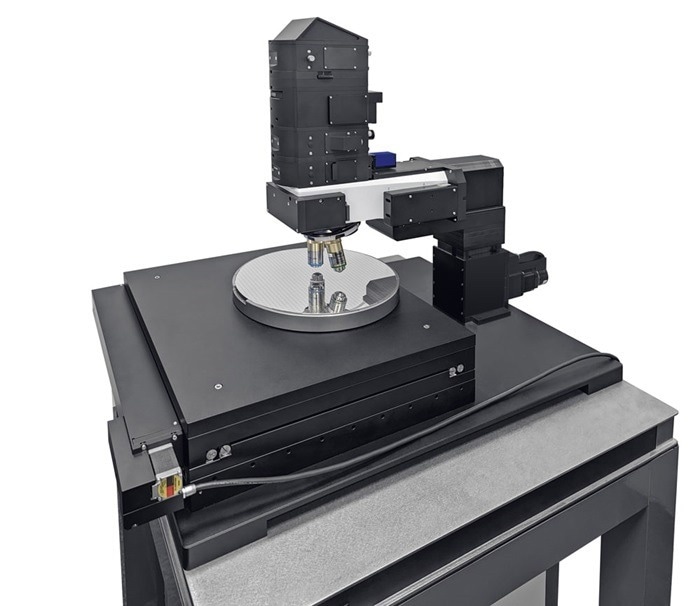
Image Credit: Oxford Instruments WITec
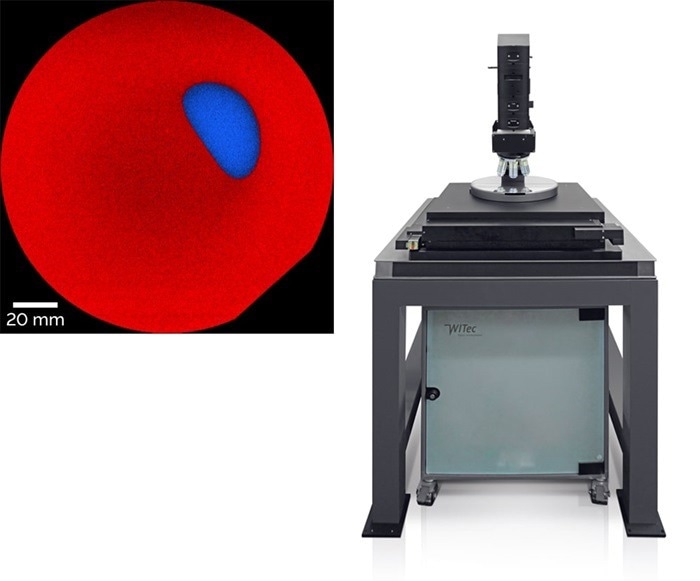
Image Credit: Oxford Instruments WITec
Key Features
- Active vibration damping
- Active focus stabilization for large-area measurements (TrueSurface)
- Extensive automation for remote control and recurring measurement workflows
- Industry-leading confocal Raman microscope for high speed, sensitivity, and resolution
- Large-area scanning (300 x 350 mm) for wafer inspection
- Scientific-grade, wavelength-optimized spectrometer for high signal sensitivity and spectral resolution
- Software for advanced data post-processing
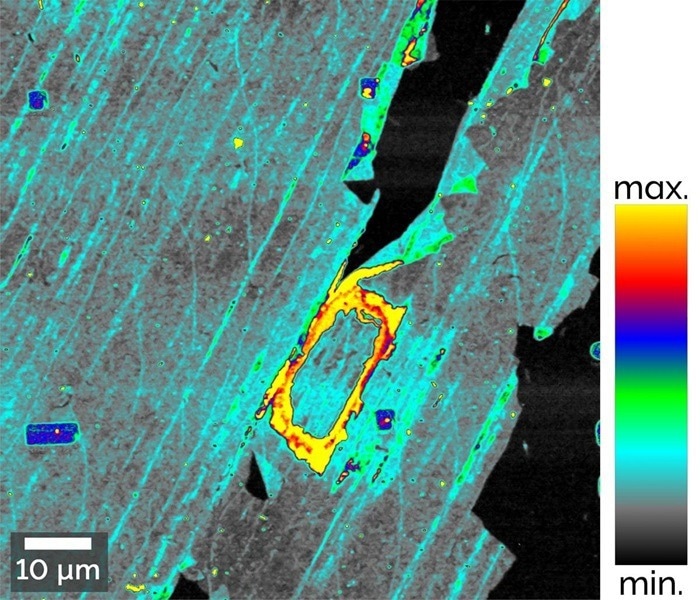
High-resolution Raman image of CVD-grown graphene, color-coded according to the D-band intensity, which depends on the defect density in the carbon lattice. Image Credit: Oxford Instruments WITec
Large-Area Wafer Inspection
For the semiconductor industry, ensuring wafer quality is of utmost importance. To assess the uniformity of the material and identify regions of strain or inconsistent doping, it is essential to thoroughly examine the entire surface area of a wafer.
In the example below, the complete surface of a 150 mm (6 inch) silicon carbide (SiC) wafer was imaged with Raman microscopy using a 532 nm laser for excitation. The analysis revealed non-uniform doping concentration across the entire area. The UHTS 600 spectrometer, known for its high sensitivity, detected peak shifts below 0.01 cm-1, exposing stress fields within the wafer.
To maintain a sharp Raman image of the entire wafer, it was crucial to actively keep the surface in focus. TrueSurface recorded the wafer’s topography and the Raman data simultaneously and compensated for height variations.
Furthermore, a depth scan through an epitaxially overgrown SiC wafer was recorded to visualize the distribution of the different layers. The sample was provided by the Fraunhofer Institute for Integrated Systems and Device Technology IISB in Erlangen, Germany.
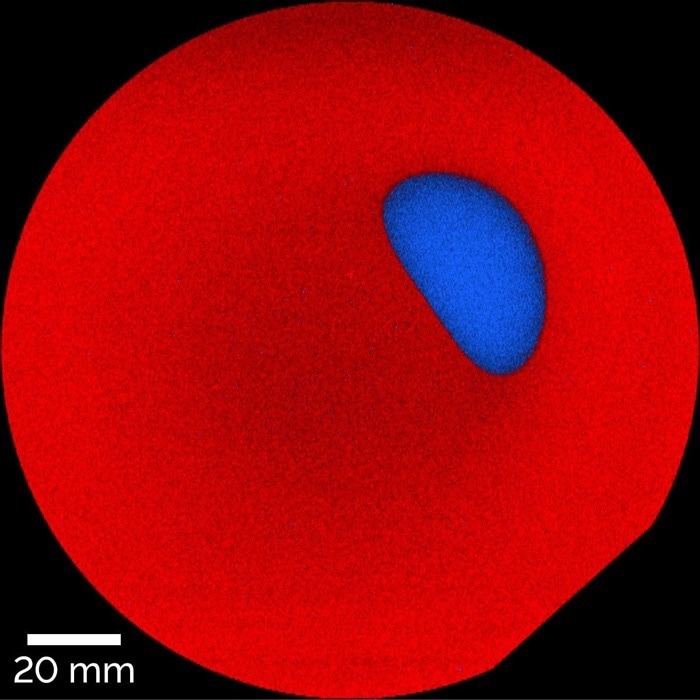
Confocal Raman image of a 150 mm SiC wafer. TrueComponent Analysis identified two spectra, which mainly differed in the doping-sensitive A1 peak (ca. 990 cm-1). The image reveals an oval region (blue) with a different doping concentration than the bulk wafer area (red). Image Credit: Oxford Instruments WITec
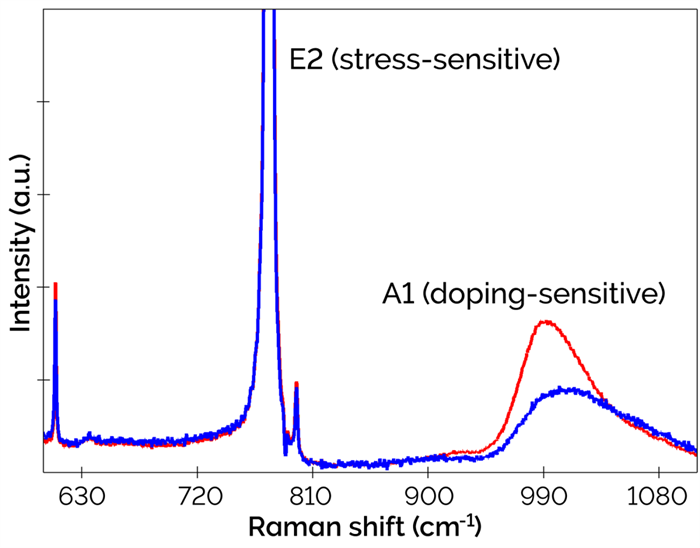
Raman spectra of the two components identified in the 150 mm SiC wafer by TrueComponent Analysis. Image Credit: Oxford Instruments WITec

Raman depth scan of an epitaxially overgrown SiC wafer, showing a thin interface layer (blue) between the wafer substrate (green) and epitaxial layer (red). Image Credit: Oxford Instruments WITec
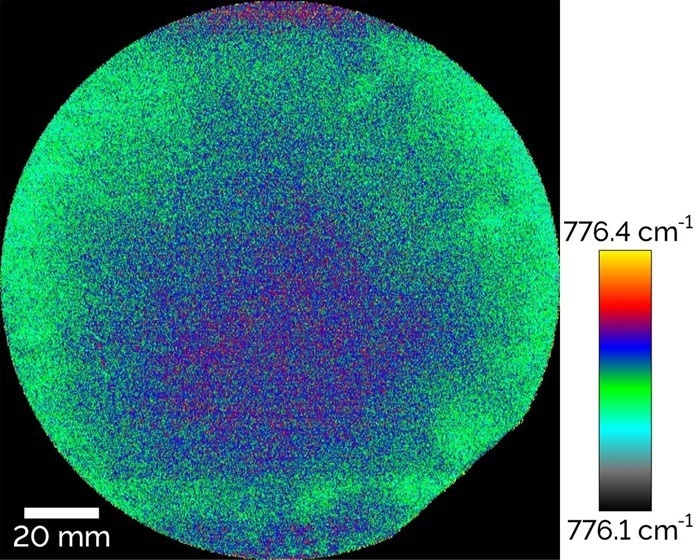
Confocal Raman image of a 150 mm SiC wafer, color coded for the position of the stress-sensitive E2 peak (776 cm-1). The image reveals a small, presumably stress-induced peak shift from the wafer’s center toward its edge. Image Credit: Oxford Instruments WITec
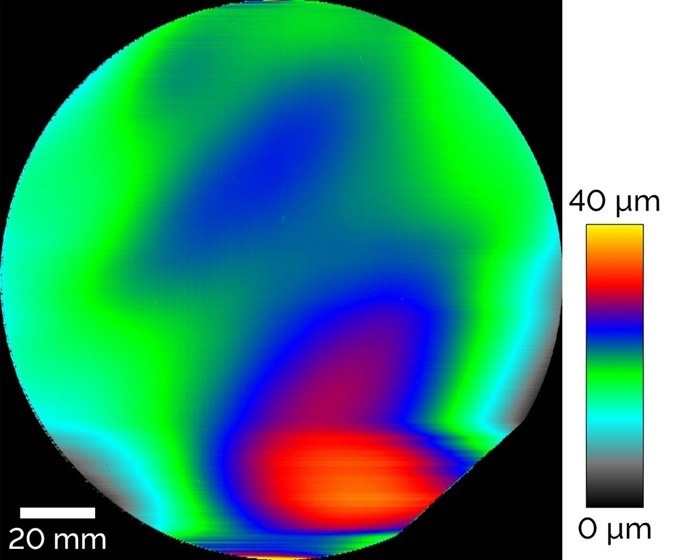
Topography of a 150 mm SiC wafer with height variations of up to 40 µm. Image Credit: Oxford Instruments WITec
Specifications
- 300 x 350 mm scanning stage
- Active vibration damping
- Data acquisition and post-processing with the latest WITec Software Suite
- DCOM interface for design and control of individual measurement procedures with LabVIEW, Python, C# and other programming tools
- Fully automated microscope control with AutoBeam Technology
- Highly sensitive, on-axis, lens-based, excitation wavelength-optimized UHTS spectrometer featuring thermoelectrically-cooled, scientific-grade spectroscopic CCD camera
- Research-grade alpha300 Raman microscope
- TrueSurface for active focus stabilization and topographic Raman imaging
- Wafer chuck, optionally with vacuum pump
- White-light illumination for sample overview
- Workflow manager for streamlining recurring experimental tasks
- Various laser wavelengths are available
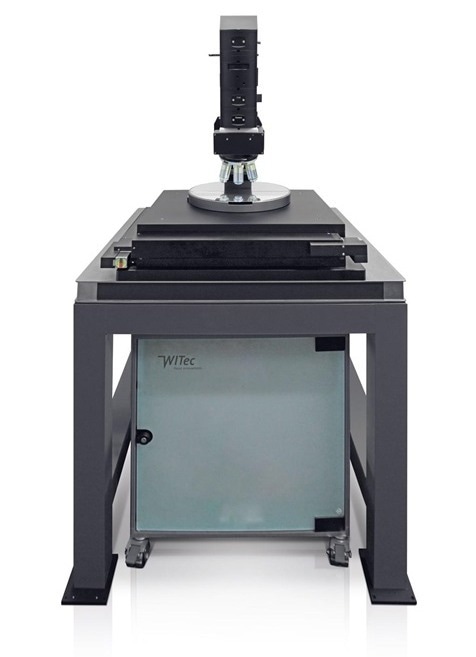
alpha300 Semiconductor Edition – Confocal Raman imaging microscope for wafer inspection. Image Credit: Oxford Instruments WITec
Benefits of Raman Imaging in Semiconductor Research
Confocal Raman imaging is a highly effective technique for both research and quality control within the semiconductor industry.
This technique can nondestructively acquire detailed, spatially-resolved chemical information about conventional materials such as silicon (Si), silicon carbide (SiC), gallium nitride (GaN), and gallium arsenide (GaAs).
It is also capable of investigating novel 2D materials such as graphene, perovskite, molybdenum disulfide (MoS2), tungsten diselenide (WSe2) and other transition metal dichalcogenides (TMDs) and heterostructures.
Raman images play a crucial role in visualizing the spatial distributions of different materials, as well as material properties such as crystallinity, strain, stress, or doping. Depth scans enable the investigation of material distribution on substrates and characterization of interface layers, while 3D Raman images provide a means to depict inclusions within a sample.
2D Materials Analysis

Characterization of a WSe2 flake. A: bright-field image. B: high-resolution Raman image (102,400 spectra acquired in about 17 minutes), distinguishing single-layer (red), bi-layer (green), and multi-layer (blue) areas. C: photoluminescence image with visible grain boundary (white arrow). Image Credit: Oxford Instruments WITec
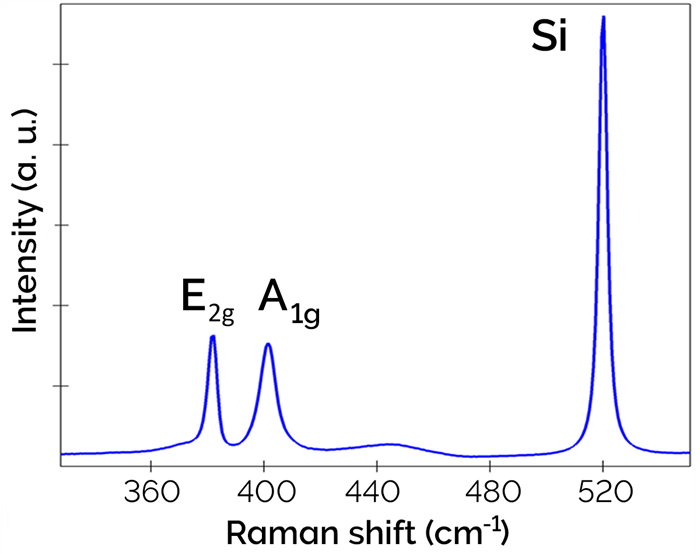
Representative Raman spectrum of CVD-grown mono-layer MoS2 on a Si/SiO2 substrate. Image Credit: Oxford Instruments WITec
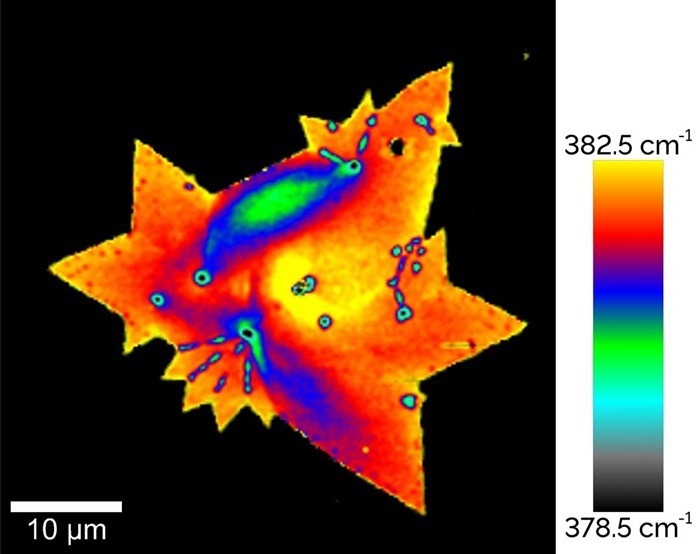
Raman image of mono-layer MoS2 color-coded for shifts of the Raman E2g band, visualizing areas of strain and doping. Image Credit: Oxford Instruments WITec